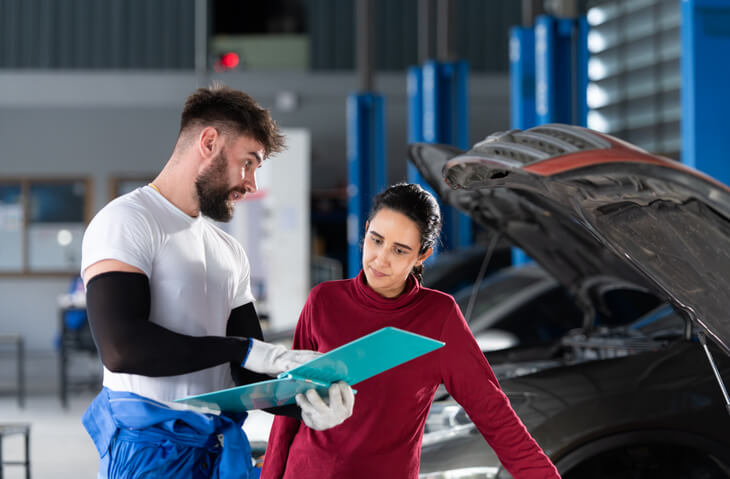How to Improve Customer Experience After Collision Estimating Training
As a prospective student interested in collision estimating training, you’re likely eager to learn the skills necessary to assess vehicle damage and provide accurate repair estimates. However, one crucial aspect of your future career that should be emphasized is customer experience.
At ATC, we emphasize the technical expertise needed to excel in collision estimating alongside the soft skills that significantly improve customer satisfaction. After completing your collision estimating training, here’s how to enhance the customer experience.
Use Empathy and Communication After Collision Estimating Training
The aftermath of a collision is often a stressful time for vehicle owners. They might be dealing with the shock of the accident, potential injuries, and the inconvenience of being without their vehicle. Approaching each customer with empathy and understanding can set a positive tone for the interaction. Listening carefully to their concerns and addressing them with compassion helps build trust and reassures customers that they are in good hands.
Effective communication will also be key after collision estimating training. Explaining the damage assessment process, the estimated costs, and the expected repair timeline can alleviate much of the uncertainty and anxiety customers may feel. Avoiding technical jargon and speaking in plain language ensures that customers fully understand the situation and the steps being taken to resolve it.

Always Provide Transparency and Honesty
Transparency is critical in building trust with customers. Be honest about the extent of the damage, the costs involved, and any potential delays in the repair process. If additional issues are discovered during repairs, inform the customer immediately and explain how these issues will impact the initial estimate. Customers appreciate honesty and are more likely to return or recommend your services if they are treated fairly.
Providing a detailed, itemized estimate can further enhance transparency. Break down the costs for parts, labor, and additional services so that customers understand what they are paying for. This level of detail fosters trust and demonstrates your professionalism and thoroughness as a collision estimator.
Timely Updates
Keeping customers informed throughout the repair process is essential. Regular updates on the progress of their vehicle’s repairs help manage expectations and reduce anxiety. Whether through phone calls, emails, or text messages, maintaining consistent communication reassures customers that their vehicle is being taken care of.
In case of delays, promptly notifying customers and providing an updated timeline can prevent frustration. Offering realistic timelines from the outset and sticking to them as closely as possible shows reliability and respect for the customer’s time.

Quality Assurance
Ensuring high-quality repairs is fundamental to customer satisfaction. After completing your collision estimating training, it is crucial to work with a reputable repair facility that adheres to industry standards and uses quality parts. Customers want to know that their vehicle will be restored to its pre-accident condition, if not better.
Before returning the vehicle to the customer, conduct a thorough inspection to verify that all repairs have been completed correctly and that no issues have been overlooked. A well-done job satisfies the customer while enhancing your reputation as a skilled and reliable collision estimator.
Leveraging Technology
In today’s digital age, leveraging technology can significantly enhance the customer experience. Utilizing software for digital estimates, appointment scheduling, and progress tracking can streamline the process for both you and your customers. Digital estimates can be emailed, allowing customers to review them at their convenience and ask any questions.
Implementing a customer relationship management (CRM) system can help you track customer interactions, preferences, and history, enabling you to provide more personalized service. A CRM system can also automate follow-up communications and reminders, ensuring each customer is accounted for.
In conclusion, improving customer experience after our auto body estimating course estimating goes beyond technical skills. It involves empathy, clear communication, transparency, timely updates, quality assurance, and leveraging technology. By mastering these strategies, you can ensure your customers feel valued, informed, and satisfied, leading to a successful and rewarding career in collision estimating.
Are you ready to start automotive training?
Contact ATC Surrey to learn more!


